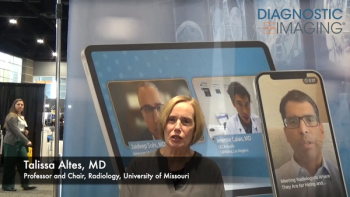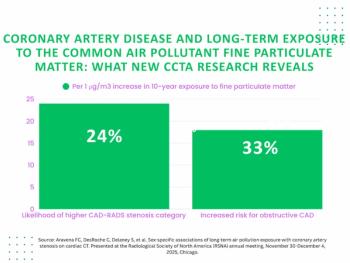
Fewer Women in Radiology, Particularly in Certain Parts of the US
The number of female radiologists in the US varies considerably depending on geography.
Women are underrepresented in radiology, with the disparity varying at state, county, and practice levels, according to a study published online at the in the
Researchers from NYU Langone Medical Center in New York City, N.Y., the Mayo Clinic in Rochester, Minn., and Emory University School of Medicine in Atlanta, Ga., sought to assess the geographic variation in gender disparities in the radiologist workforce in the United States.
The researchers identified the gender, location, and practice affiliation of all radiologists and gender of all nonradiologists for all providers listed in the Medicare Physician Compare database. They then summarized variation in female representation among radiologists at state, county, and individual practice levels, and associations with a variety of county-level population characteristics were explored.
The results showed that nationally, 7,501 of 32,429 (23.1 percent) of all radiologists were women versus 481,831 of 1,034,909 (46.6 percent) of Medicare-participating nonradiologists. At the state level, women were represented highest in the Northeast and mid-Atlantic regions, lowest in the West and Midwest:
Region | Percentage of female radiologists
• Washington, DC | 39.3%
• Massachusetts | 34.3%
• Maryland | 31.5%
• Wyoming | 9.0%
• Montana | 10.7%
• Idaho | 11.7%
At the county level, female representation varied from 0 percent to 100 percent. There were weak positive correlations with:
• County-level population
• Median household income
• College education
• English nonproficiency
• Mammography screening rates
• Democratic voting in the 2016 presidential election
There was a weak negative correlation with county-level rural population percentage.
In practices that comprised 10 or fewer members, female representation varied greatly (0 percent to 100 percent). It was higher among academic (32.3 percent) than nonacademic (20.6 percent) radiologists, and in states with higher female-to-male relative earnings.
The researchers concluded that when compared with nonradiologists, women are underrepresented in the national radiologist workforce and this varies considerably at state, county, and practice levels. The differences can be partially explained by a variety of demographic, socioeconomic, and political factors.
Newsletter
Stay at the forefront of radiology with the Diagnostic Imaging newsletter, delivering the latest news, clinical insights, and imaging advancements for today’s radiologists.




























